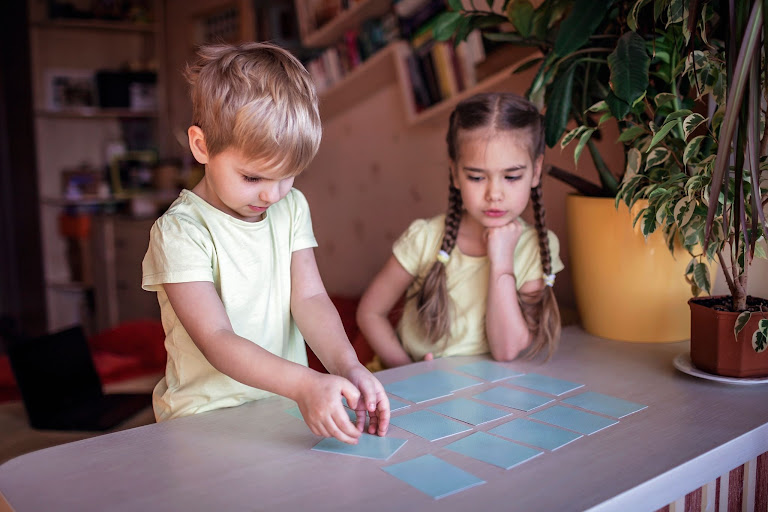- Why is creativity so important?
- Examples of creative thinking skills
- The best ways to teach creativity to kids – 9 tips
- Teach to ask “what if” questions
- Support creative play and imagination
- Allow freedom and independence
- Provide opportunities for hands-on exploration and experimentation
- Read books together
- Learn about and develop your child’s interests
- Make the most of screen time
- Encourage them to take risks and try new things
- Emphasize the process not the product
Creative thinking and generating new ideas are some of the most desirable personality traits in today’s world. In the future, when most routine tasks will be performed by computers, the value of creativity will surely increase even more.
Creative thinking can be learned – it’s best to start at the very beginning of your child’s education. Encouraging your child to solve problems creatively and explore the world creatively is one of the best things you can do for them.
Find out how to encourage creativity in a child and discover some examples of creative thinking. With our 9 practical tips for boosting creative-thinking skills, your kid will start to think creatively in no time!
Why is creativity so important?
Creativity and critical thinking are interconnected. They are considered essential soft skills in the modern world. Nowadays, many employers in both large corporations and small businesses have noted that creative thinking is the most sought-after competency of the 21st century, rather than IQ or hard skills.
Creativity allows us to think outside the box and develop new ideas, solutions, and perspectives. It helps drive innovation, progress, and growth in many areas, including the arts, sciences, technology, and business.
Creativity also plays a key role in personal development, as it helps people express themselves, find fulfillment, and pursue their passions.
With critical thinking and problem-solving skills, people constantly come up with new and creative solutions to challenges and obstacles.
Thanks to creativity, our mental flexibility and cognitive development allow us to look at things from different angles and think in new and innovative ways. Some say that without creativity, our lives and the world around us would be mundane and boring.
Examples of creative thinking skills
Here are some of the crucial creative thinking and problem-solving skills that, once mastered, will be a valuable asset for your child in the future.
- Analytical mindset
- Problem-solving
- Communication
- Open-mindedness
- Organization
- Experimentation
- Active listening
- Curiosity
- Lateral thinking
- Divergent Thinking
The best ways to teach creativity to kids - 9 tips
Many parents ask: “What can I do to help my child be more creative?” and “What are the tools of creativity, which I should use?”. There are no direct answers to these questions, since each kid is different and develops at their own pace and manner.
However, with our 9 tips on teaching critical thinking, you can help your kid develop essential skills for problem-solving, decision-making, and independent thinking. Our critical thinking activities are easy to perform at home, school or during everyday life situations. Let’s explore how to nurture your child’s creativity!
Teach to ask “what if” questions
Researcher Melissa BurkleyIn* recommends teaching children to ask, “What if?” to enhance their creativity. If you can get your children to ask questions about the world and how it works, they’re more likely to come up with their own unique answers.
For a fun creative exercise, see who can come up with the craziest “what-if” situation. A few ideas to help your child get started: “What if animals could suddenly talk?”, “What if there really were pots of gold at the ends of rainbows?”, “What if one day your teacher was replaced by an elephant?”.
Support creative play and imagination
Psychologist Margarita Tartakovsky** recommends unstructured free time as a way to support creative thinking. Give your child a little time each day to independently explore their own ideas and interests outside and inside your home.
Additionally, make time for creative play or free time that encourages curiosity or creative thinking. Offering your child a pack of crayons and some paper, or encouraging them to play pretend with siblings, can be great ways to support creative play.
Remember, that a blank page, a blank canvas, and a blank screen can be intimidating. A collection of examples can help spark the imagination. To help children generate ideas for new projects, encourage them to start messing around with materials. As children play with LEGO bricks or tinker with craft materials, new ideas emerge.
Allow freedom and independence
Letting children explore their own interests and ideas is a great way to promote their creativity because there are no bounds to what they might get up to.
According to psychologists, “children strive for more independence from the age of two. From this age, you should encourage your child to make simple choices about their lives.” Of course, the level of independence you can expect from children must be suitable for their age, ability, and given activity. You definitely shouldn’t expect your 3-year-old to start catching the bus!
Avoid over-managing kids and let them know it’s okay to draw outside the lines! Encouraging them to come up with their own games and plans for the day is just one of the ways you can nurture their creative side.

Provide opportunities for hands-on exploration and experimentation
Danish researchers*** discovered that getting out in nature is not only good for mental health, but can also improve creativity. Their study found that spending time outdoors can enhance curiosity, encourage flexible thinking, and help kids recharge.
Next time the weather allows it, go on a walk around your neighborhood to refresh your child’s mind and give them a good brain boost.
Remember, that through hands-on exploration and experimentation in nature, children are able to try out different solutions to problems and see the results of their actions. It allows them to learn from their mistakes and build their understanding of cause and effect.
Read books together
Reading aloud to your kid or reading by older children themselves can boost their imagination and problem-solving skills. Make a goal to read at least a chapter from a book or a picture-book together every day.
If your book has pictures in it, ask your child to guess what the page is about before you read it together. This can help children practice problem-solving, as well as reading comprehension.
Reading also develops critical thinking. As children listen to stories, they learn to make connections, draw conclusions, and make predictions, which can help develop their critical thinking skills.
Learn about and develop your child’s interests
When children are passionate about a subject, they’re more likely to put their heart into it. Get to know your child’s creative dreams, and help them pursue them. If your child wants to learn to play the piano, for example, spend an afternoon playing together and celebrate their progress.
There are some activities that have been shown to increase the creative capacity of kids. A study by the University of Surrey found that children who had improved their own dance moves, rather than followed a routine, came up with more original ideas on unrelated creativity tests.
Also, several other studies on kids aged 4-6 have shown that belief in magic and fantasy leads to greater creativity.
Make the most of screen time
Kids nowadays spend much of their free time in front of smartphones and computers. It’s not necessarily a bad thing if you can distinguish passive screen time from active screen time.
Make sure your kid spends their free time productively and provide them with educational apps and video content. All that screen time can be used as an advantage for developing creative and language skills at the same time!
Learning English online with Novakid is a great opportunity to immerse your kid in the English language and encourage them to think creatively. Thanks to the 1:1 approach, engagement of native-speaker certified teachers and endless possibilities of a virtual classroom, Novakid students can explore their creative nature and improve their English skills.
Encourage them to take risks and try new things
If your child is working on a creative project, encourage them to try something new, even if they’re not sure that it will work out. They could, for example, try drawing something more complicated than they usually do or learn a new song on an instrument.
Teaching your child to take creative risks can help them focus more on the creative process than the outcome. That way, even if a project doesn’t turn out how they expected, they’re learning to try something different and think from new angles.
Emphasize the process not the product
As your kid works on various projects, highlight the process, not just the final product. Ask frequently about their strategies and their sources of inspiration. Encourage experimentation by honoring failed experiments as much as the successful ones.
Allocate special time for children to share the intermediate stages of their projects and discuss what they plan to do next and why.
Did you like this article?
We hope that you found creative activities presented in this article useful. What other ideas do you have in mind to boost your child’s imagination? Share with us your insight on supporting creative thinking in children. Leave a comment below.
Help your child develop creative skills with Novakid. English online lessons at Novakid are full of games and activities supporting creativity in children aged 4-12. Find out how it works by signing your kid up for a free demo lesson.
*Source: Burkley, M. Ask “What If?” to Boost Your Creativity. https://www.psychologytoday.com/us/blog/the-social-thinker/201712/ask-what-if-boost-your-creativity
**Source: Tartakovsky, M. 9 Ways to Support Your Child’s Creativity. https://psychcentral.com/blog/9-ways-to-support-your-childs-creativity/
***Source: Plambech, T., and Konijdendikj van den Bosch, C.C. The impact of nature on creativity – A study among Danish creative professionals. Urban Forestry & Urban Greening, 2015, 14(2), pp. 255-263









































